_______________________________________________________
From November 3rd to 5th, musicians and music students are invited to attend music workshops with leading European and Icelandic improvisational musicians.
The workshops will take place in Salurinn in Kópavogur and are part of a European project that aims to strengthen cooperation and networking.
Musicians will share their knowledge of musical performance and stage experience, as well as aspects related to the music industry in a broader context.
The project ”Adventurous Music Plateaux – a hybrid model of inclusive participation, learning, and music export development through the use of digital tools and recordings (360 VR)” is being implemented thanks to funding from the European Union’s Creative Europe program.
Artists: Antonina Car, Piotr Kaliński, John McCowen, Tom Manoury, Sophie Shell, Sara Flindt, Bernard Hammer
_______________________________________________________
A three-day convening by the Center for Strategy and Cultural Diplomacy bringing artists, curators, and scholars from 20+ countries to examine art’s role in diplomacy, policy, and public life. Across six core modules (including Arts, Culture & Soft Power and The Artist as Diplomat)
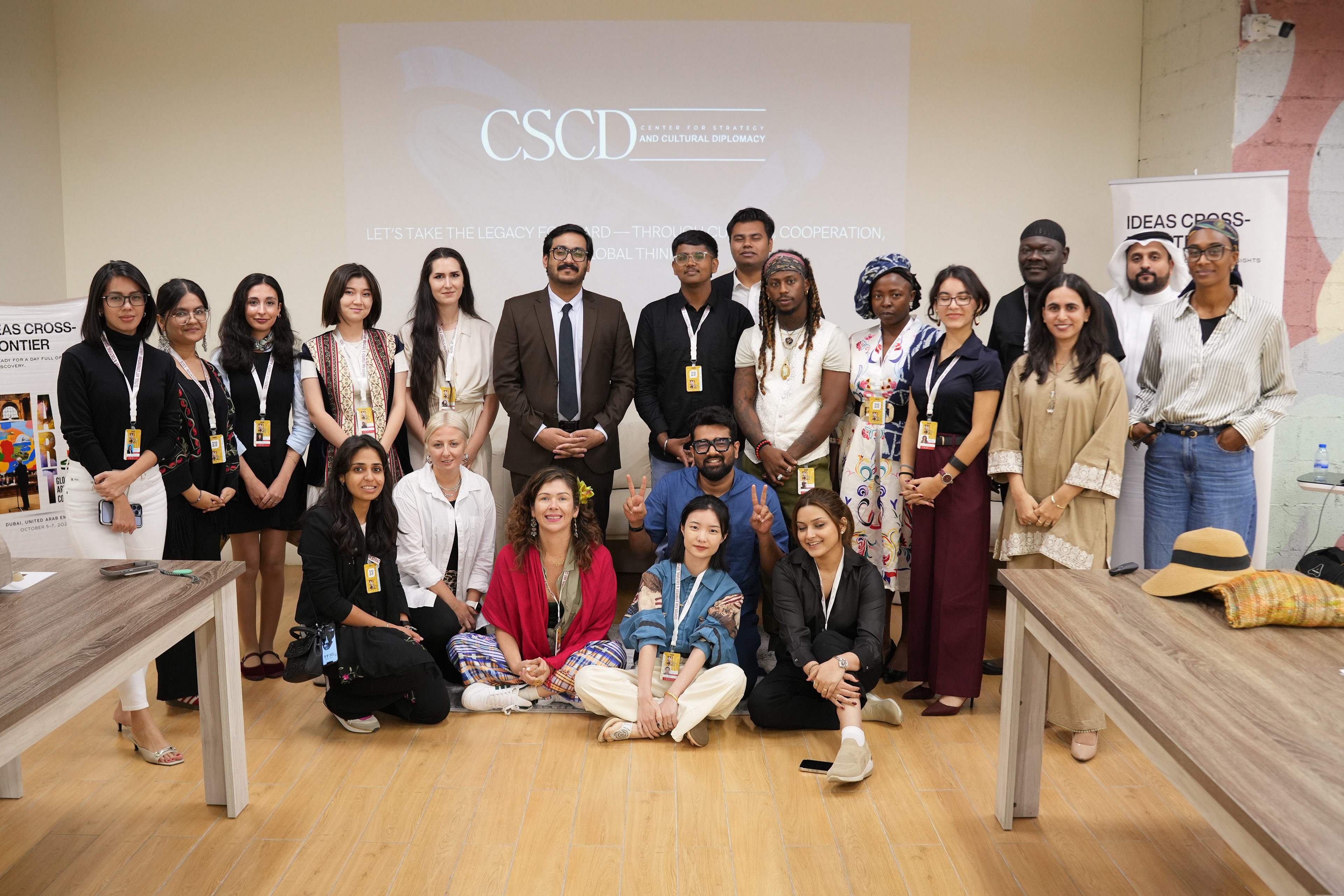
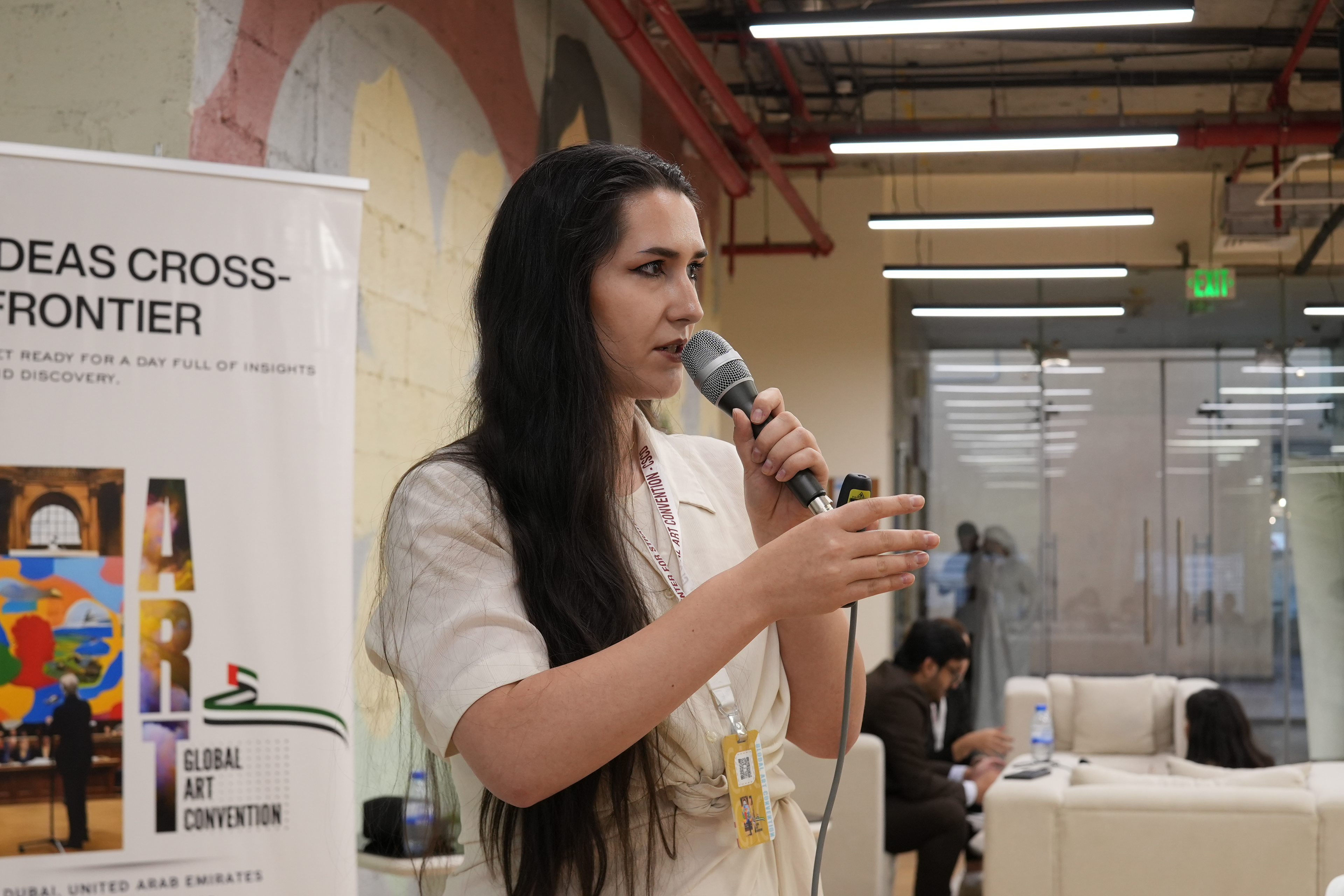
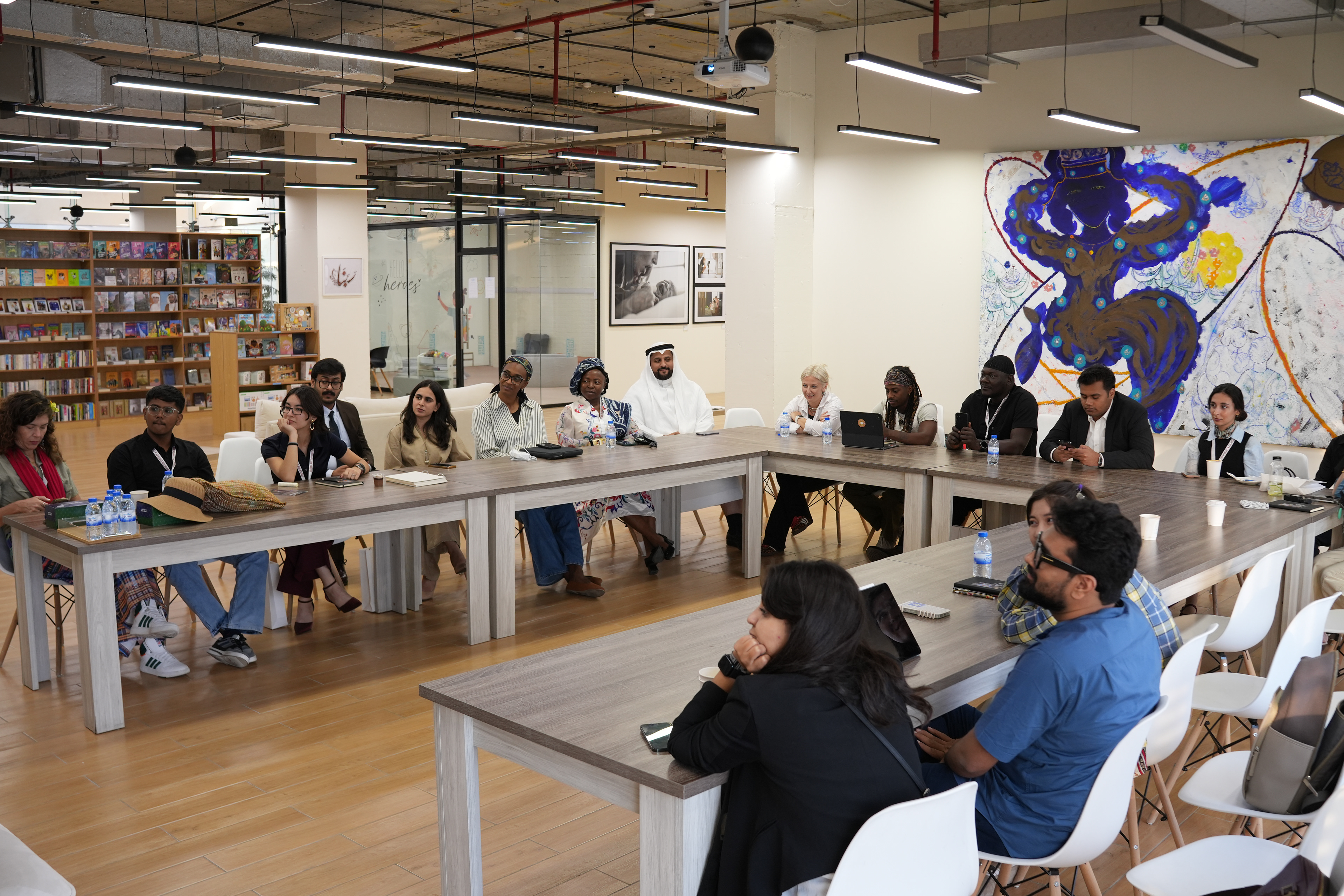
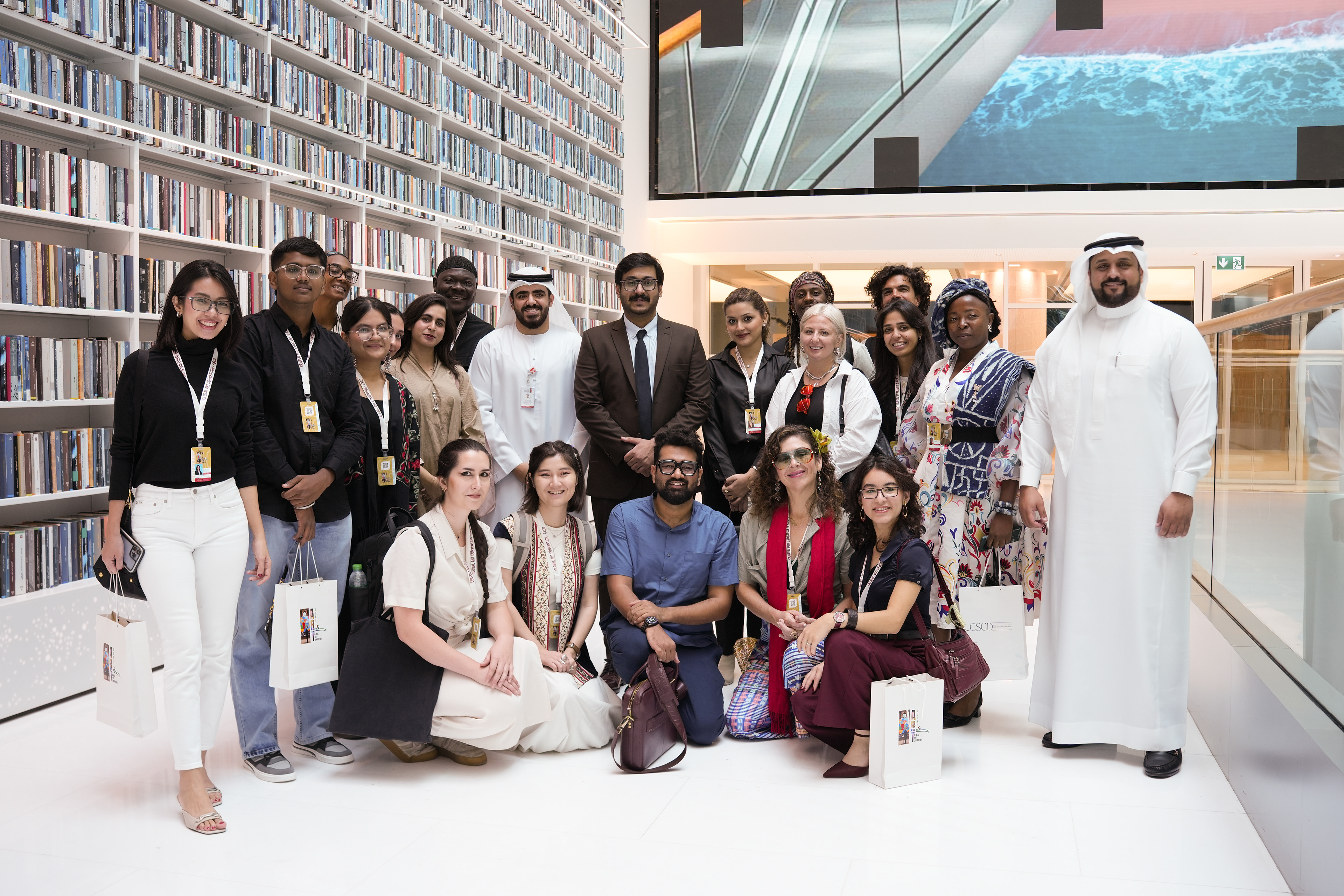
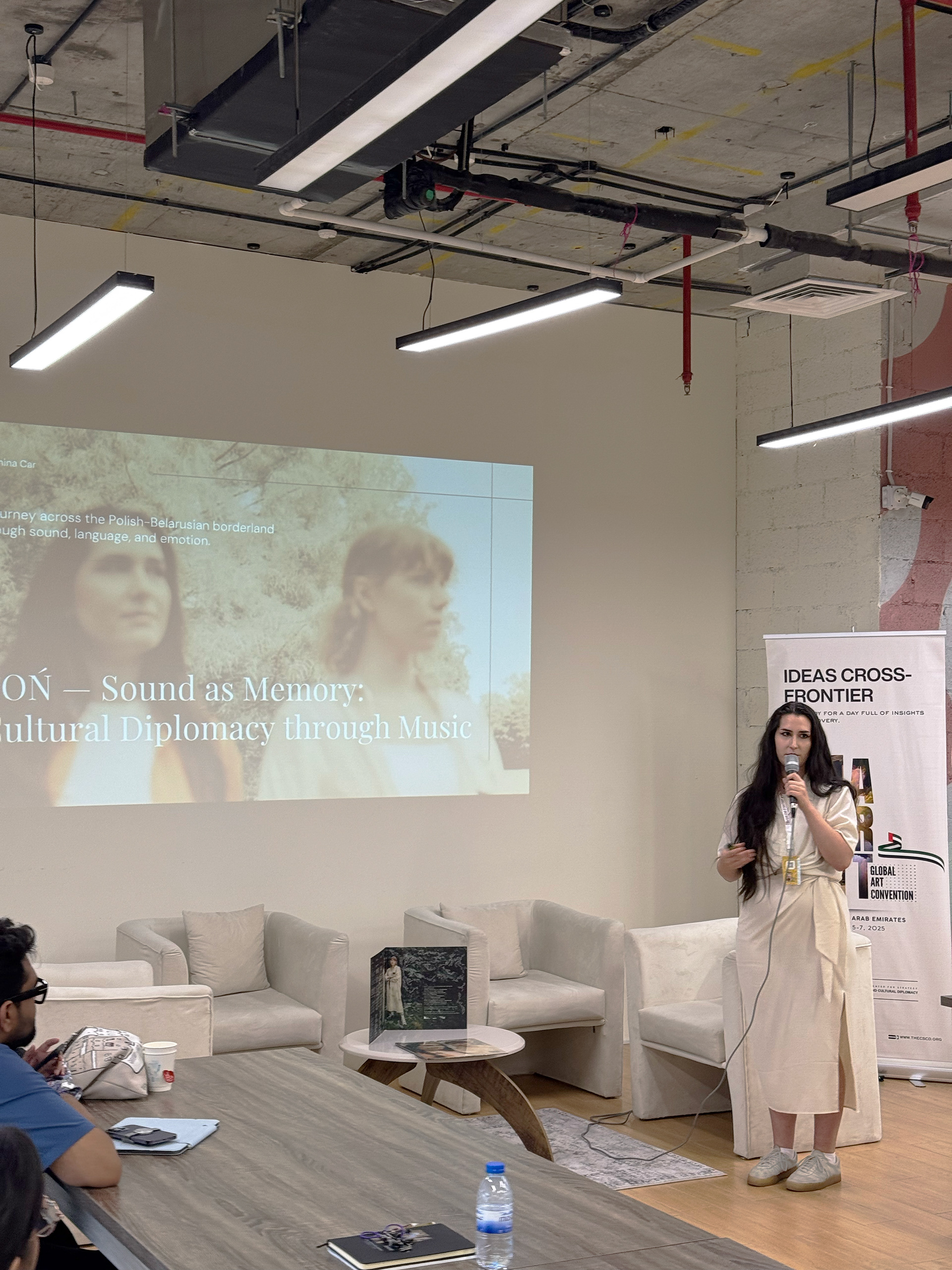
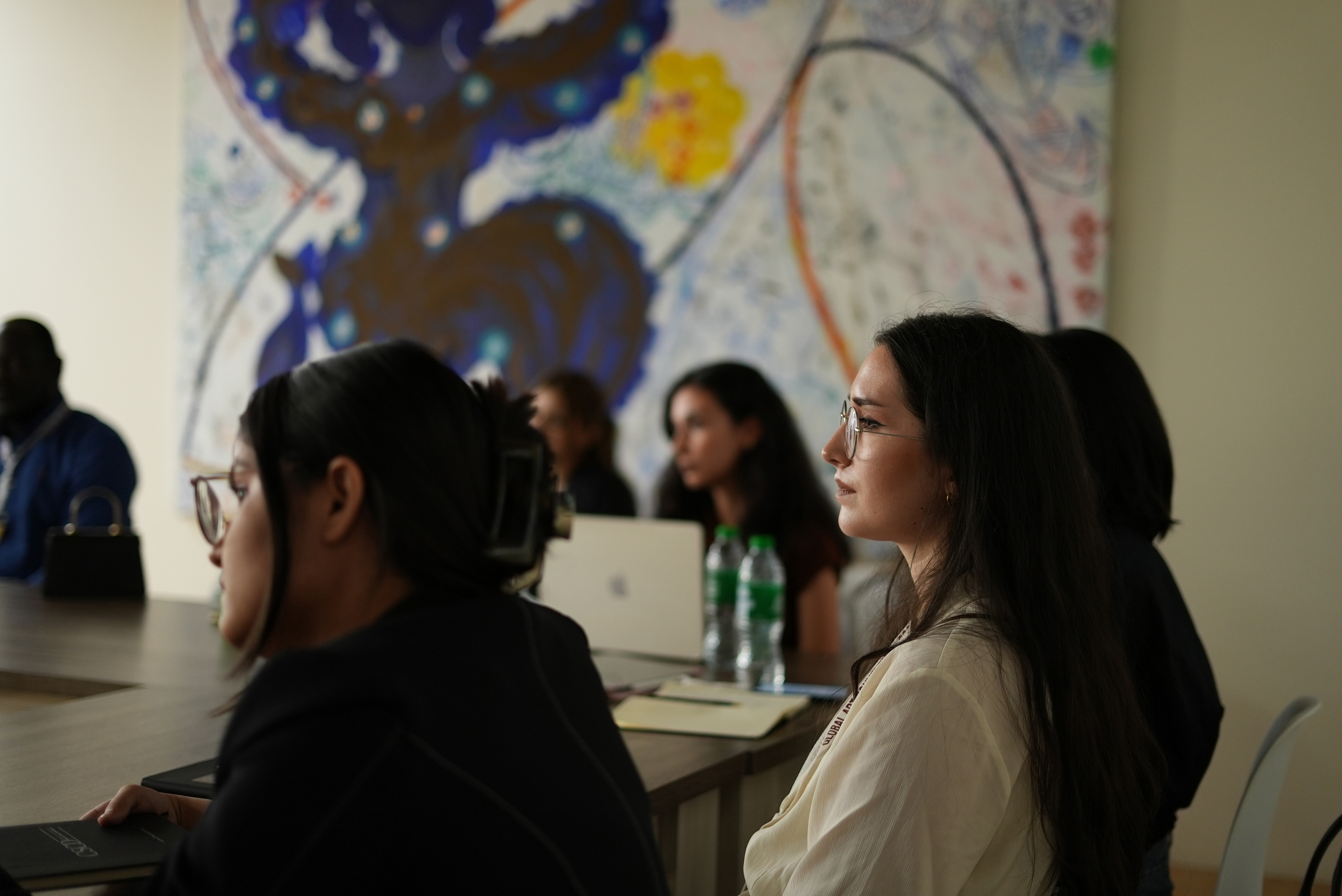
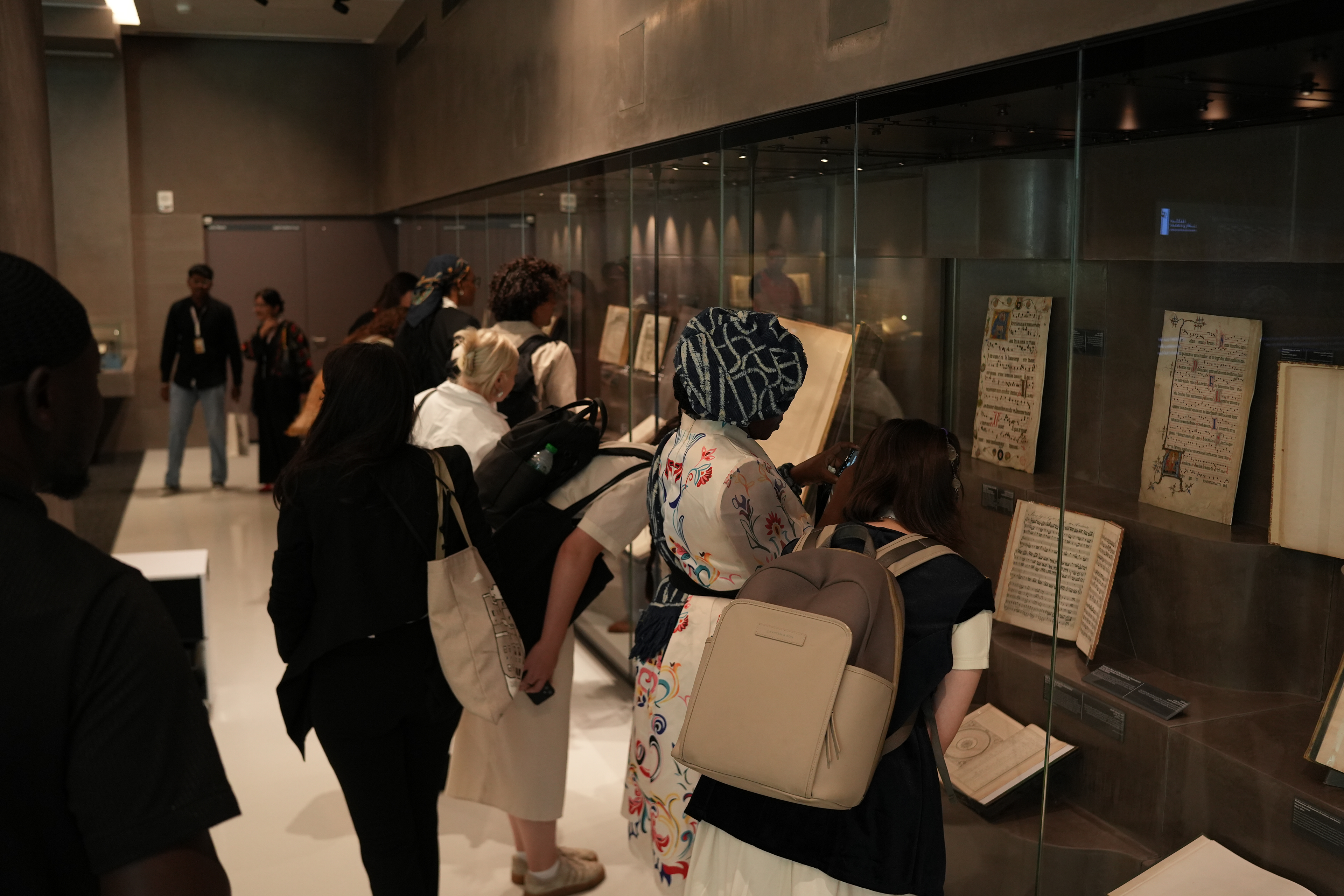
Participated as a cultural delegate and led a practice-based presentation within a programme focused on arts, culture, soft power, and the artist as diplomat. The contribution examined listening as an artistic form, attention to place as material, and ways to carry work between communities without flattening local meaning. Programming convened an international cohort at Kutubna Cultural Center and included a research visit to the Mohammed Bin Rashid Library, viewing the “Treasures of the Library” exhibition featuring manuscripts, rare books, and historical documents from the 13th century onward. Outcomes included strengthened international links and refined tools for intercultural collaboration.
Role: Cultural Delegate, Presenter
Organiser: Center for Strategy and Cultural Diplomacy (CSCD)
Role: Cultural Delegate, Presenter
Organiser: Center for Strategy and Cultural Diplomacy (CSCD)
_______________________________________________________
TransPort Literacki (formerly Fort / Port / Stacja / TransPort), organised by Biuro Literackie, is one of Poland’s most influential literary festivals, active for nearly three decades. Renowned for redefining the relationship between literature, authors, and audiences, the festival combines readings, performances, workshops, debates, and interdisciplinary collaborations.
Since its beginnings in 1996, the event has evolved across multiple cities—Legnica, Wrocław, Stronie Śląskie, and now Kołobrzeg—while maintaining its commitment to experimentation, literary discovery, and the integration of emerging voices with established international authors.
Participated in the Wysoko / Głęboko edition of the festival through a site-specific sound and performance intervention exploring listening, memory, and place.
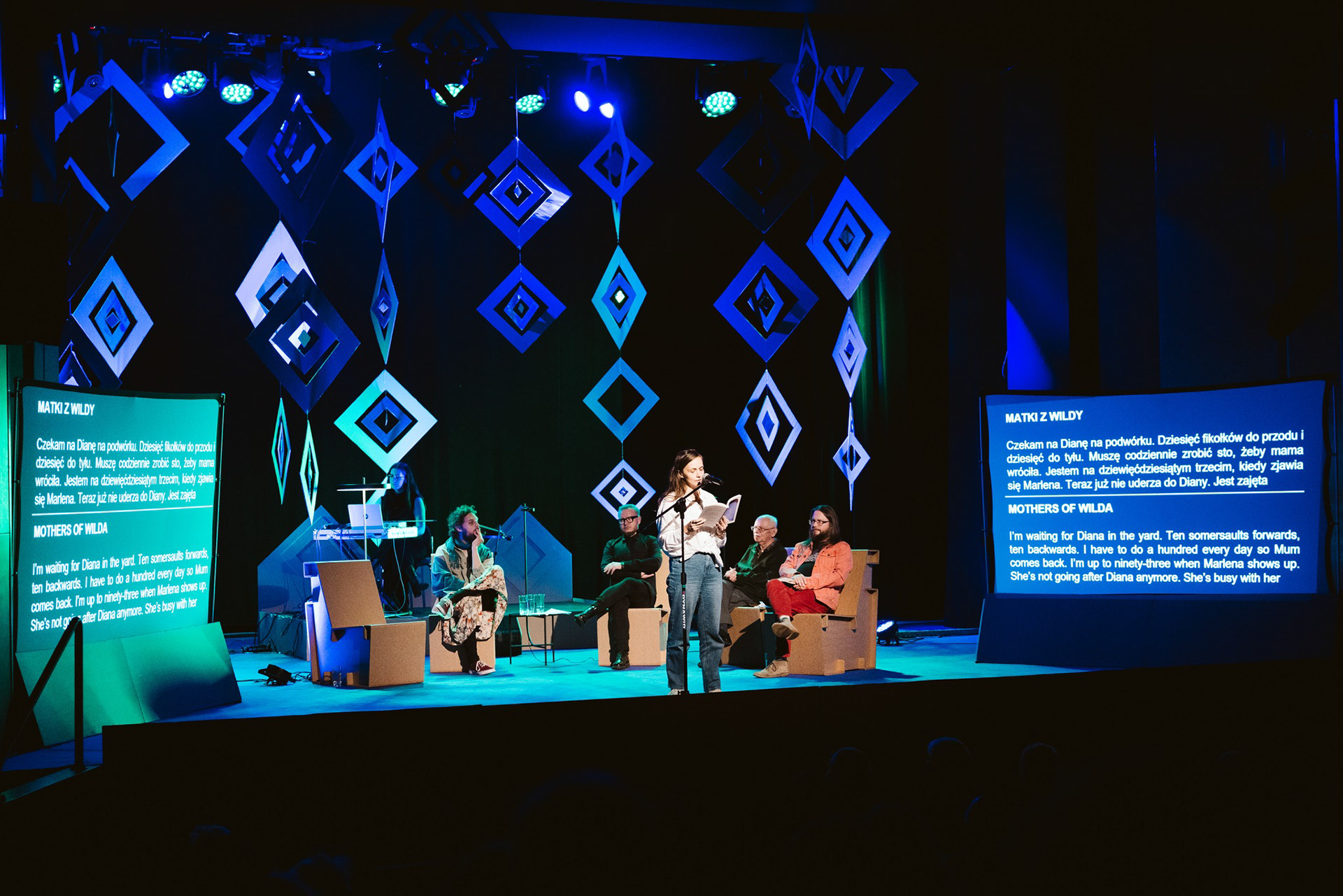
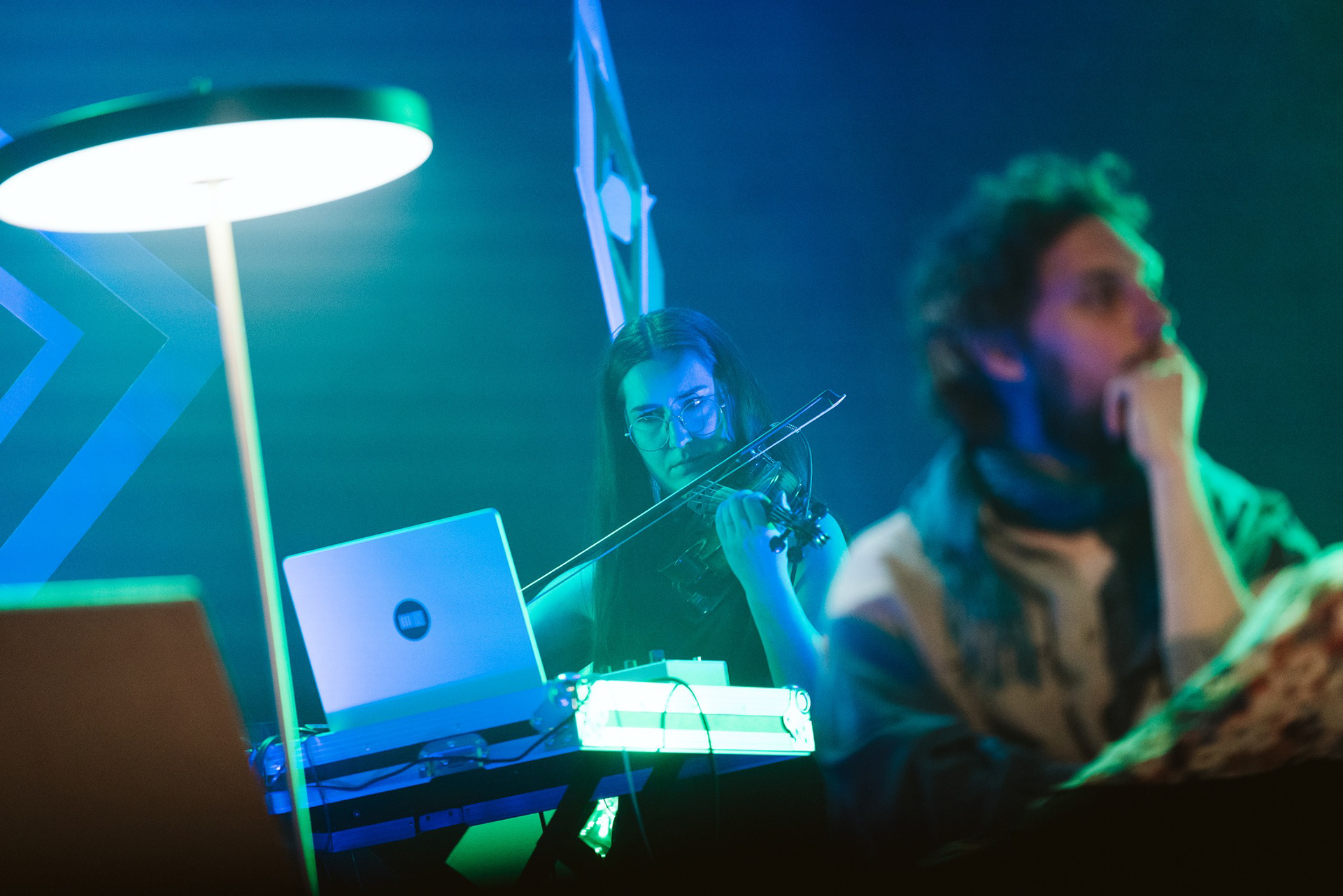
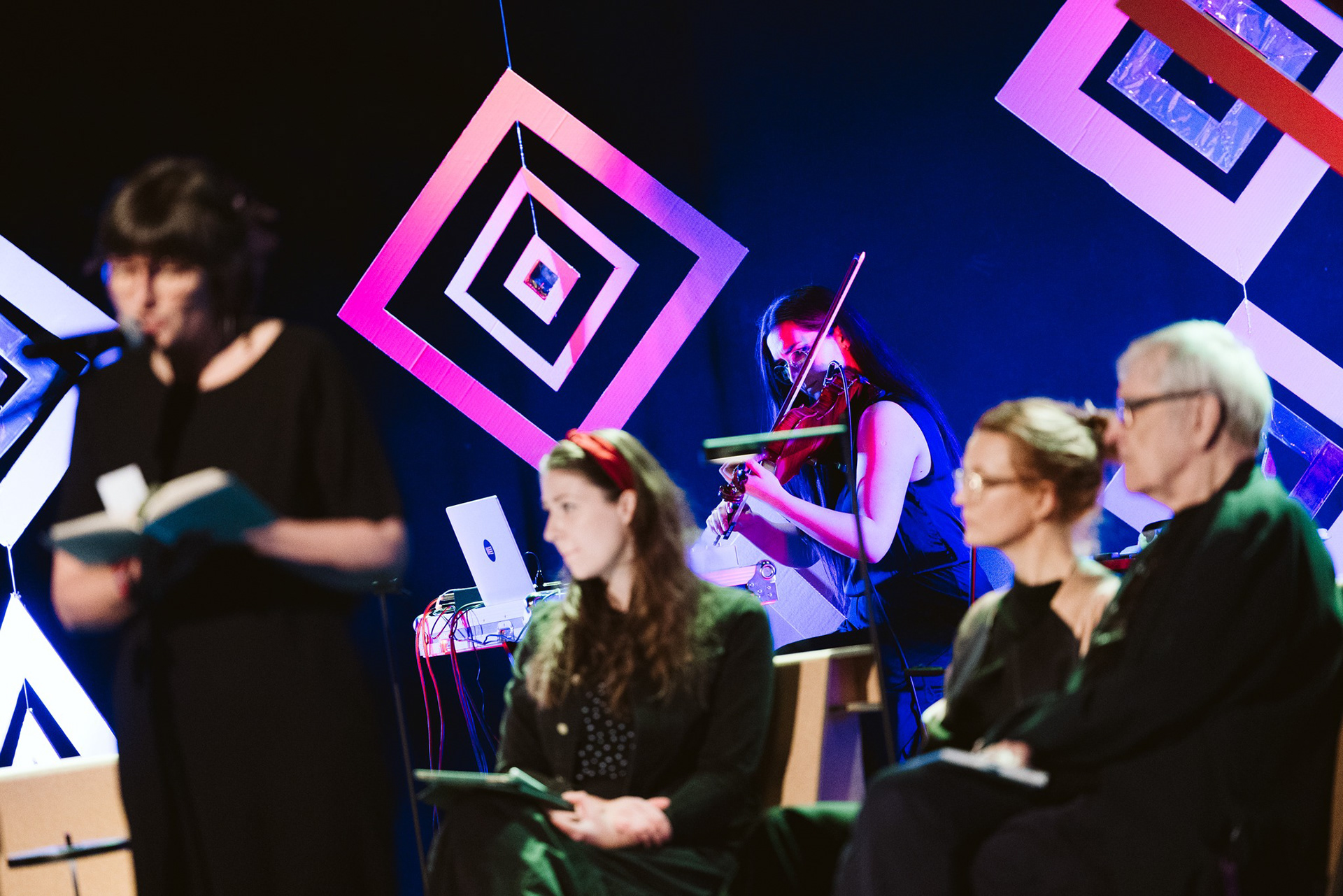
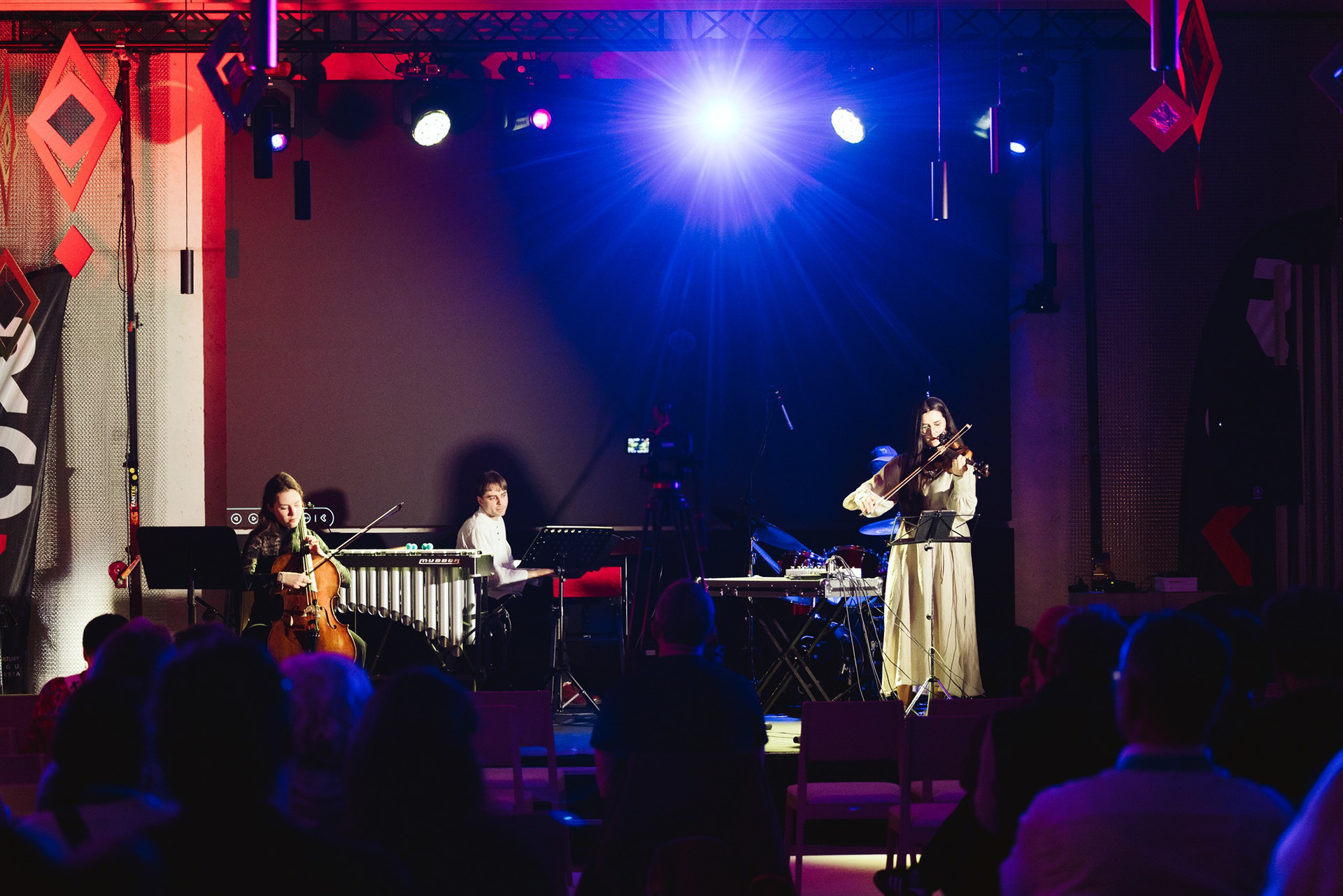
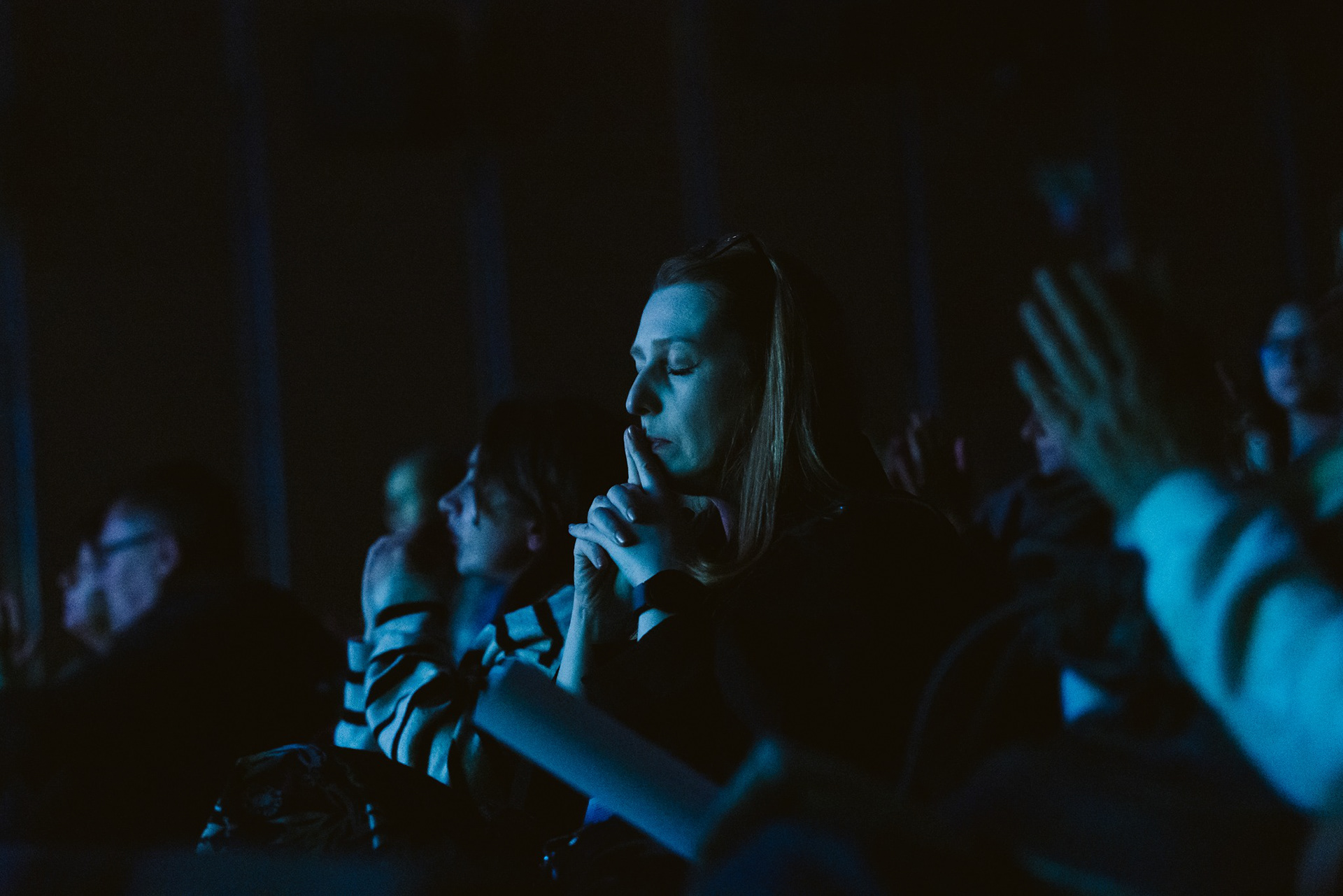
TransPort Literacki is widely recognised as:
– a key platform for debut authors and emerging artistic voices
– a cross-generational meeting place, dissolving traditional hierarchies between writers, readers, and artists
– a hub of international literary exchange, hosting authors such as Laurie Anderson, Herta Müller, Reiner Kunze, Rae Armantrout, Edmund White, Craig Raine, Nick Cave & Seán O’Hagan, Kim Yideum, and Hiromi Itō
– a space dedicated to experimentation, sensitivity, and dialogue, where literature intersects with music, visual art, and performance
– a cross-generational meeting place, dissolving traditional hierarchies between writers, readers, and artists
– a hub of international literary exchange, hosting authors such as Laurie Anderson, Herta Müller, Reiner Kunze, Rae Armantrout, Edmund White, Craig Raine, Nick Cave & Seán O’Hagan, Kim Yideum, and Hiromi Itō
– a space dedicated to experimentation, sensitivity, and dialogue, where literature intersects with music, visual art, and performance
The 2025 theme “Wysoko / Głęboko” framed the festival as a journey through peaks of thought and depths of emotion, situating artistic interventions like Antonina’s within a broader reflection on language, perception, and artistic vulnerability.
_______________________________________________________
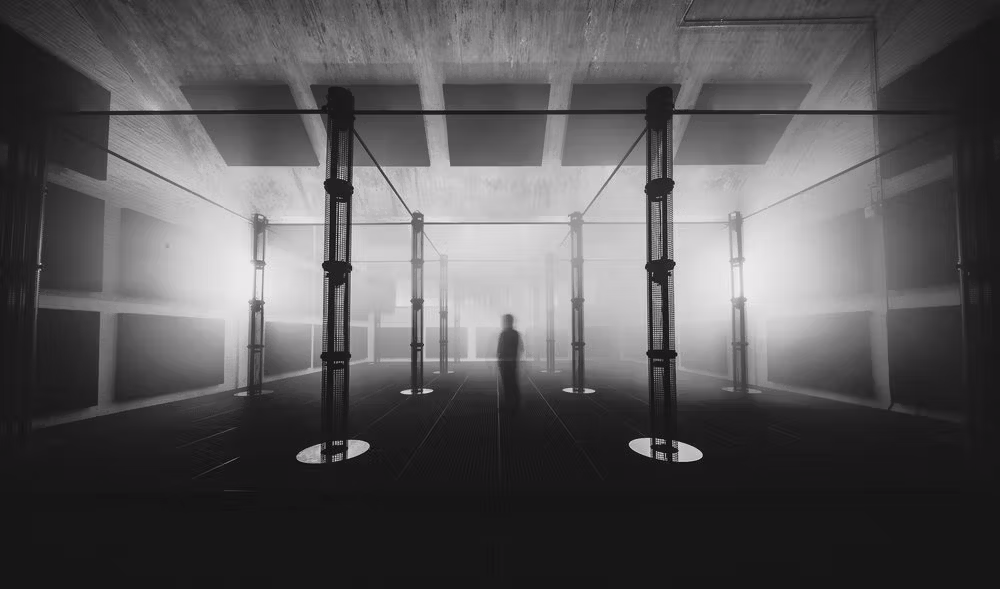
MONOM, Berlin
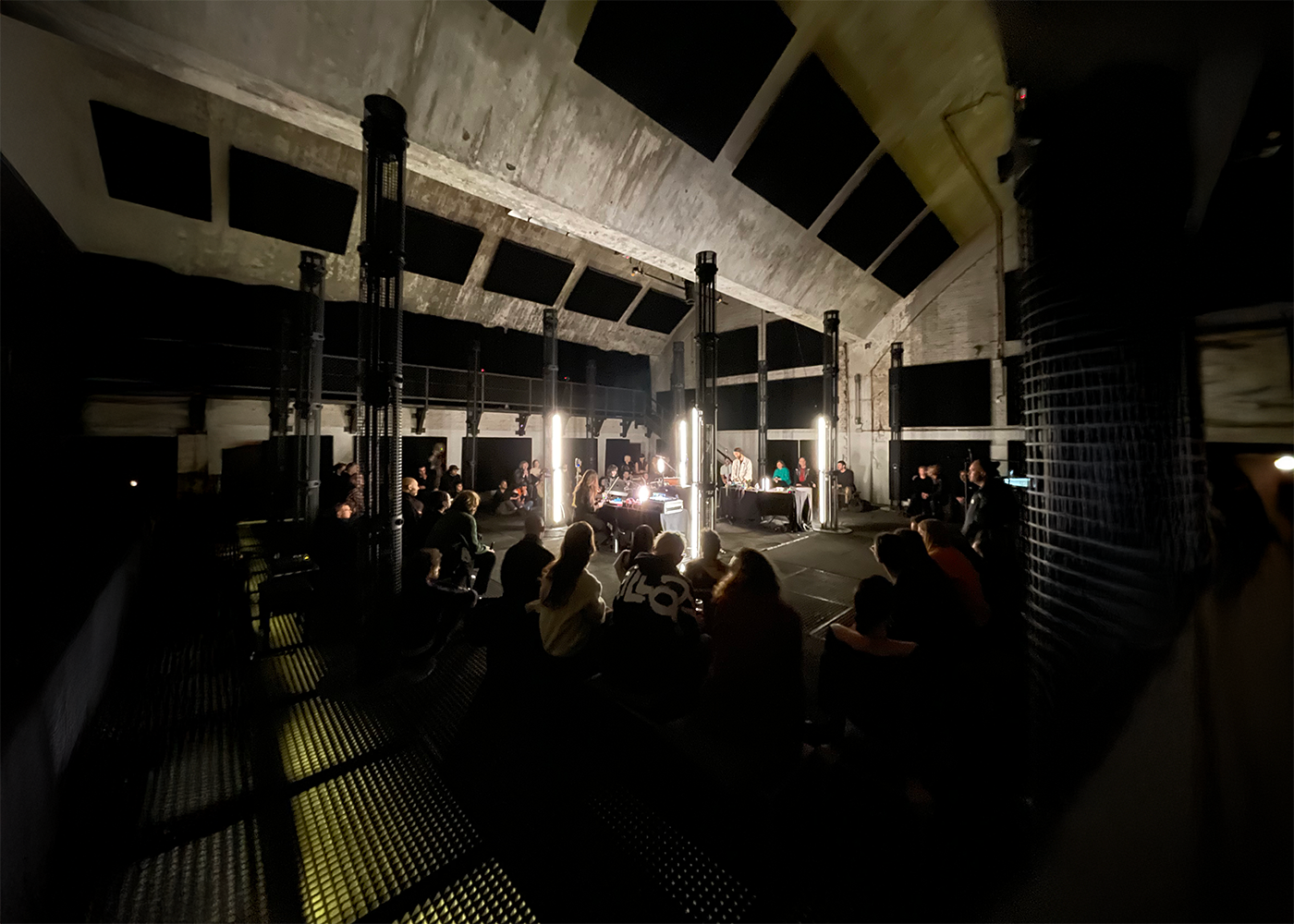
MONOM, Berlin
The German edition of the Adventurous Music Plateaux was presented in collaboration with MONOM, Berlin. This unique event featured two sessions of live improvisation, each showcasing a distinct set of Polish and Berlin-based artists chosen for their diverse backgrounds and unique approaches to sound and music. The performance was spatialized live using the 4DSOUND instrument amplified by the large-scale 4DSOUND system housed at MONOM.
Artists: Albert Stensen, Antonina Car, William Russell, Daniela Huerta
_______________________________________________________
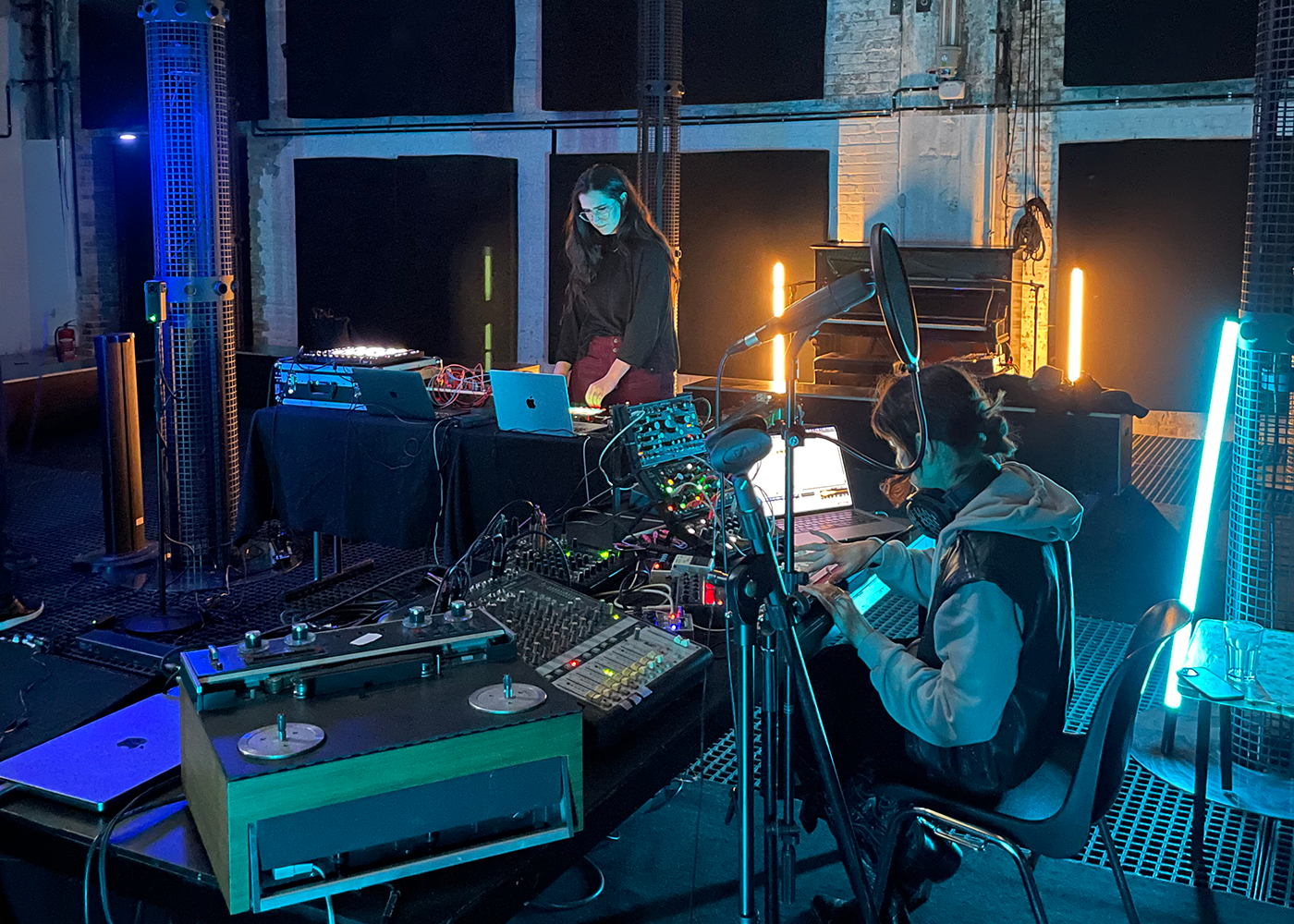
MONOM, Berlin
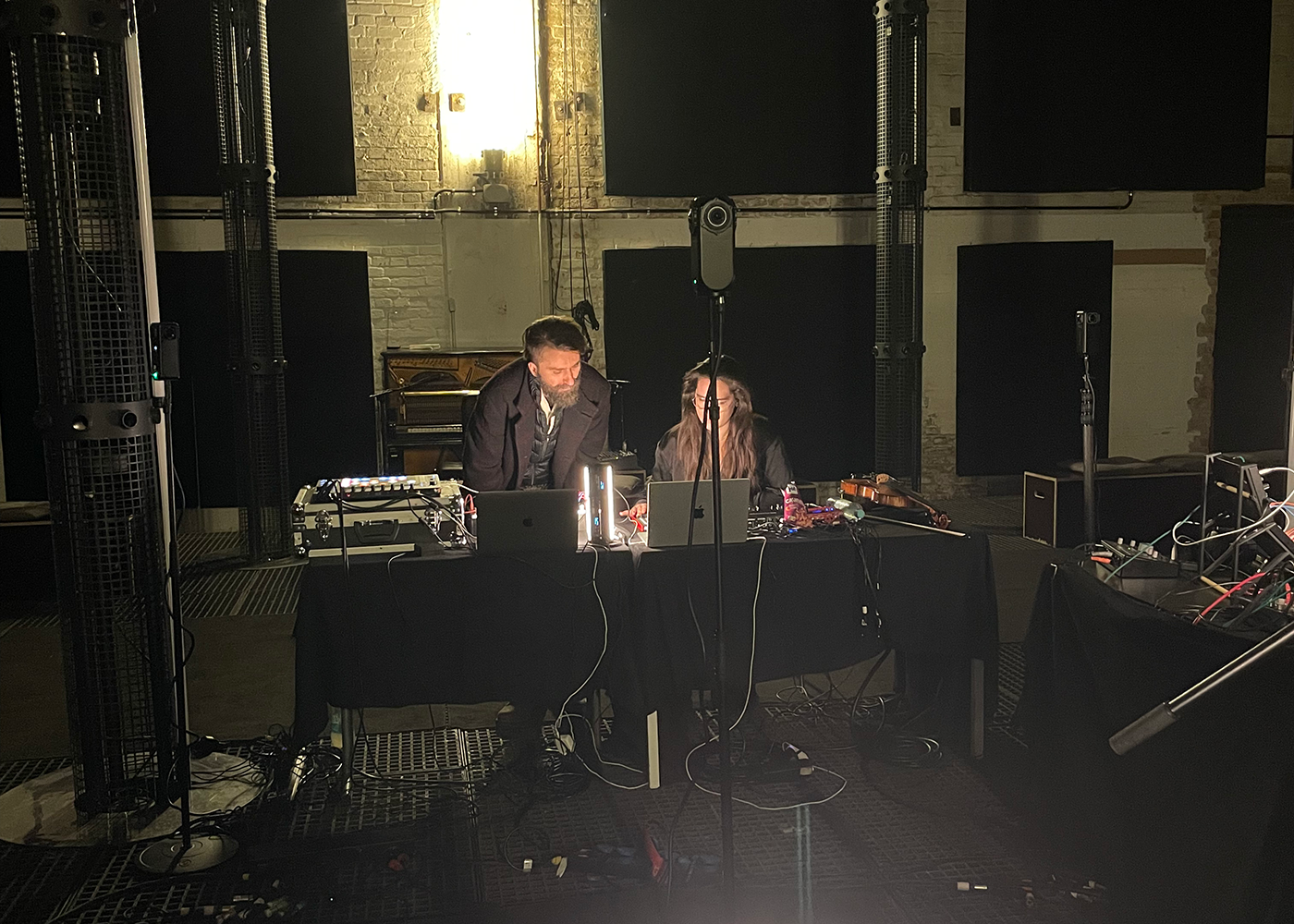
MONOM, Berlin
Workshop at MONOM Studios, Berlin. As part of the AMP project, this 3-hour workshop will feature seven 30-minute talks, each led by one of the participating artists. Free and open to the public, this session was designed as an intimate conversation with very limited capacity, where attendees will have the opportunity to listen and engage with the artists as they share their insights, experiences, and creative processes in relation to improvised music within the 4DSOUND system. Attendees could expect an enriching experience that fosters understanding and appreciation of the artists’ practices while allowing for a 30-minute session for questions and discussion at the end.
Artists: Albert Stensen, Antonina Car, Łukasz Czekała, Pawel Pruski, William Russell, Daniela Huerta, Júlia Koffler
_______________________________________________________
"TOŃ"
Music collaboration with Niczos - a white voice singer
exploring the sounds of the Polish-Belarusian borderland.
The project combines contemporary electronic sounds, with elements of traditional sounds from Białystok, such as white singing, language, and the sound of violins. This combination creates a sonic journey that transports the listener to a space where the past meets the present. Our material is modern yet reflects the character of the Podlasie region. You can expect music that is both innovative and immersed in tradition, and above all – full of emotion and artistic passion.
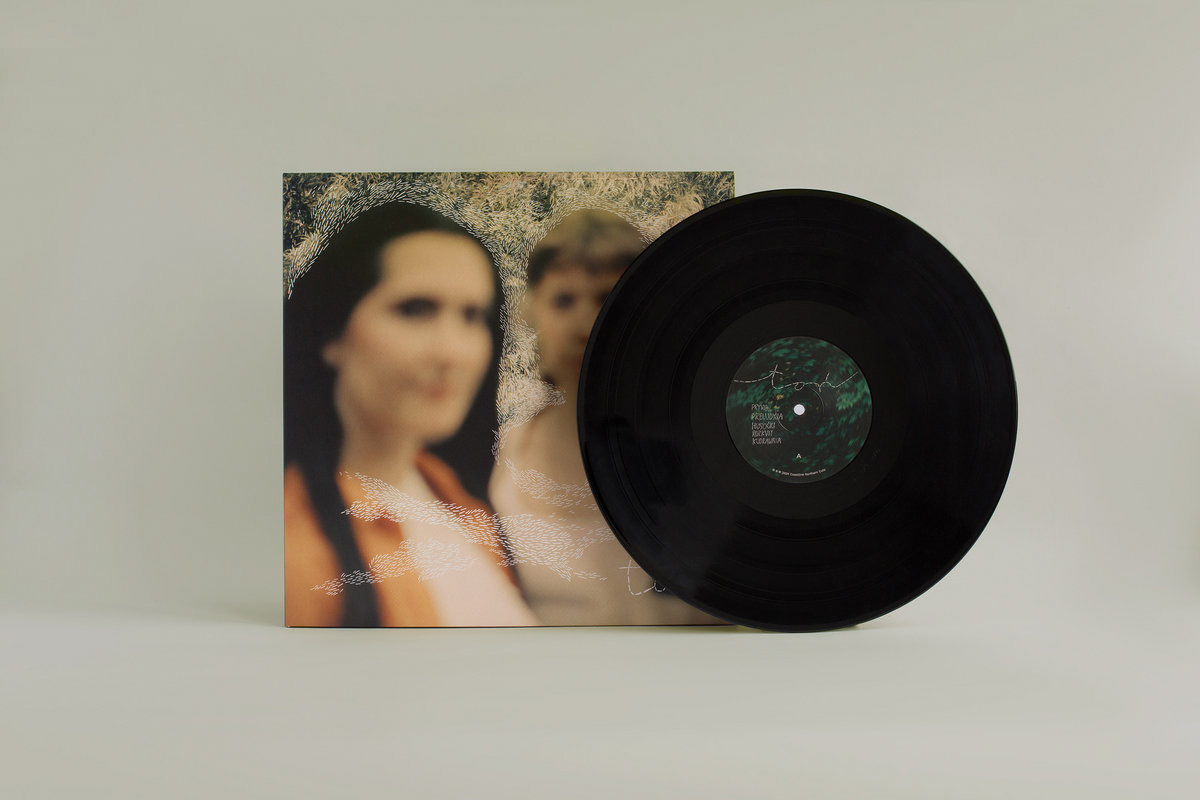

https://uptodate.pl/en/artists/antonina-car-niczos/
Antonina Car and Niczos blend their electroacoustic sound with a micro-language known as "pudlaśka mova" (Podlachian language), rooted in East Slavic dialects of eastern Poland. TOŃ boldly merges traditional elements with modern, experimental sound while maintaining the simplicity of folk music and its narrative essence. It tells a story that flows between dreams and reality – a tale of love, loss, and the world of a young girl grappling with suffering and longing.
interview:
https://www.nowamuzyka.pl/2024/05/30/inicjatywa-festiwalu-stala-sie-katalizatorem-dla-naszego-kreatywnego-procesu-wywiad-z-antonina-car-i-niczos/
_______________________________________________________
"Czarny Pokój"
Quadrophonic Sound Installation
Quadrophonic Sound Installation
[PL]
Czarny pokój to nawiązanie koncepcyjne projektu do czarnego pokoju jako potocznej nazwy na Studio Eksperymentalne Polskiego Radia (1957 2004). Można doszukiwać się również nawiązania do obrazu Kazimierza Malewicza pt. "Czarny kwadrat na białym tle", gdyż przestrzeń została wbudowana w białe pomieszczenie o podstawie kwadratu. "Czarny pokój" to pierwsza w kraju galeria dźwiękową, z rocznym programem instalacji dźwiękowych. Do projektu zaprosiliśmy twórczynie i twórców z całego świata oraz artystki i artystów kraju i z Gdańska.
[EN]
Czarny Pokój is a conceptual reference to the black room as a common name for the Polish Radio Experimental Studio (1957-2004). One can also find references to Kazimierz Malevich's painting entitled "Black Square on a white background" because the space was built into a white room with a square base. "Czarny Pokój" is the first sound gallery in the country, with a yearly program of sound installations. We invited creators from all over the world and artists from Poland and Gdańsk to the project.
_______________________________________________________
A Deconstruction of Vitali’s Chaconne in G Minor"
In "Resonance of Lights and Shadows" the artist presents a daring deconstruction of Vitali’s Chaconne in G Minor, transposing the baroque masterpiece into the realm of experimental electronic music. This piece reimagines Vitali's composition through the lens of modernity, utilizing the interplay of synthesized sounds, digital manipulations, and fragmented echoes to explore the depths of historical resonance within contemporary sonic landscapes.
The track dissects the original chaconne's intricate harmonic structure, isolating and reconstructing its core elements to forge a new auditory experience. Through the application of granular synthesis, the artist disintegrates the familiar melodies, transforming them into ephemeral whispers and haunting drones that linger in the aural space. These spectral fragments evoke a sense of temporal dislocation as if the echoes of the past are being refracted through the prisms of digital distortion.
Each segment of "Resonance of Shadows" is meticulously crafted to juxtapose the ornate elegance of the baroque period with the raw, unfiltered textures of electronic soundscapes. The rhythmic pulses and oscillations serve as a counterpoint to the chaconne’s original dance-like qualities, creating a dialogue between tradition and innovation. The deliberate manipulation of dynamics and spatialization immerses the listener in an evolving sound field where the boundaries between time, genre, and form are blurred.
By stripping away the conventional frameworks and expectations, the artist invites the audience to engage with Vitali’s Chaconne on a fundamental, almost primal level. This deconstruction challenges the listener to reconsider the essence of musical beauty and complexity, emphasizing the transformative power of reinterpretation. "Resonance of Shadows" stands as a testament to the enduring relevance of classical compositions, demonstrating how they can be reinvented to resonate with the consciousness of the present and future.
In this audacious reimagining, the artist not only pays homage to the timelessness of Vitali’s work but also propels it into new dimensions, inviting us to contemplate the symbiotic relationship between past and present, tradition and innovation, sound and silence.
_______________________________________________________
"Immersed Sensibilities"
Music Album
"Immersed Sensibilities" is Antonina Car's debut LP album released under the American label Time Released Sound. Working on the album, the artist spent half a year in seclusion, in her home studio, composing and recording practically every day. That way, she could focus on ideas and experiment with all available resources. At first, the album was intended to be instrumental. During the composition process, the artist arranged subsequent layers of sound by humming, however, she began to perceive the voice as another instrument. Antonina used the violin, baritone violin, cello, keyboards, and synthesizers for the recordings. She recorded all these instruments herself. The last track includes a flute and a clarinet played by a composer from Malaysia - Zurfahani Batrisya.
“Phenomenons and events occurring in nature are the ultimate source of metaphors for every human condition. Nature perfectly shows us its strength and vulnerability, poetically flawless in its beauty and ferocity. Immersed Sensibilities is an attempt to transcribe feelings, stories, and events into a synthetic, self-contained sonic universe. It's a reflection of the intensity with which humans often imagine their emotional presence matters.” - Antonina Car
In the sounds, song titles, and original lyrics, the artist repeatedly refers to the idea of fluidity and ambivalence as a form of understanding and accepting transitional states in life. According to her, fervency is an emotional state that reflects the transfigurative character of nature. Antonina's works introduce the listener to a specific sonic "biosphere" in which we hear synthetic "beings", invented, and pictured by the imagination. The fragments with the voice are a reference to the listener's consciousness because the words are the only recognizable element - reminiscent of human reality.
The sounds in the tracks are electronically processed. Fragments that resemble field recordings (wind, thunder, rustling) are designed entirely digitally. The last piece on the album is a form of a manifesto. This is the only song in which the artist does not play string instruments. Instead, she focuses on the narrative, and this time a real field recording appears in the song - subtle footsteps on the forest ground. The song correlates with the artist's journey and it’s a form of a letter written to oneself. It combines a disorderly and uncertain beginning with a resolved yet subdued ending.
_______________________________________________________
"Spontan_06 half-improvised concert live at Kolonii Artystów"
20min electroacoustic composition for violin and electronics performed live at a concert venue in Gdańsk
_______________________________________________________
"Flautando"
Flautando is a neo-classical and post-minimalistic music track. The single was composed entirely by the pair and was mixed and mastered by Polish sound engineer, Karol Wiśniewski. Despite the distance between Fahani and Antonina (Malaysia - Poland), they completed the entire production remotely.
The concept behind this track is to create a genuine feeling of flow and depth, bringing the listeners an unhurried feeling of integrity with rhythms and structures played by real instruments. With Antonina on the violin and Fahani on the flute, this paired to an intertwined melody and later again diverge and play individual parts.